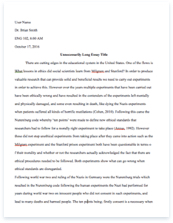International Business Reflective

- Pages: 3
- Word count: 693
- Category:
A limited time offer! Get a custom sample essay written according to your requirements urgent 3h delivery guaranteed
Order NowAccording to the interview, Coca-Cola has reached a plateau in its penetration of the global market. Across the globe, there is a market segment which is willing to pay a premium for products manufactured by global brands. In the past, Coca-Cola has successfully reached to this segment which likes foreign brands. However, this market segment has already saturated for Coca-Cola. The people overseas who will pay for Coca-Cola simply because it is a global brand are now all drinking Coca-Cola. For Coca-Cola to successfully expand their markets, they have to tailor their marketing to be more relevant to the local population and not simply ride on the coattails of their global brand.
By curtailing their marketing to the local market, Coca-Cola can increase their sales globally on many different individual fronts with each marketing campaign acting as a different and separate front. Coca-Cola can better increase its penetration of a market by customizing its marketing campaign to fit that specific region. The successes of a marketing strategy borne and made in one country may not work in another for various reasons such as a difference in demographics, values, or cultural preferences. Each region has its own set of buttons and Coca-Cola’s global marketing strategy may not be able to push those buttons correctly. Instead of being one large global company trying to reach a global market, Coca-Cola can act as a global company composed of many individual tiny markets.
Apart from the objective of increasing sales, there is also the issue of cultural sensitivity. This goes beyond trying to craft a marketing campaign which pushes the right buttons on the target locale; this is about avoiding the possibility of transferring a marketing campaign which is genuinely offensive to the local culture. One example raised is how marketing strategies used to market consumer products in the USA may be found offensive in the Islamic markets of the Middle East.
If I were in charge of marketing for Coca-Cola, my first objective in creating a marketing plan for the company in the Muslim world would be to headhunt for a local talent which has expertise and experience in marketing consumer products in the target market. He or she should have successfully implemented fruitful marketing campaigns in the past and has the ability to make things happen on his own. This person apart from having the proper connections and knowledge of marketing channels in the region would also have the proper cultural knowledge of the local people. This person would know what are the buttons in the local culture which needs pushing and he would also have the know-how on creating and implementing a plan to push said buttons.
Regardless of the local marketing officer’s nationality, the first task for me would be to try and understand the market myself. Significant market research would have to be done to get an accurate profile of the local population. This research is apart from the usual analytical tools needs to be done (such as SWOT). What are the values they associate with the product? What values do they associate with the product’s consumption? How do they purchase and use competitor and comparable products in their daily lives? What promotional activities does the market respond to? Without an accurate picture of the consumer behavior, planning for any marketing strategy would be directionless. Coca-Cola should build a whole new marketing strategy around this information. Since this is a local marketing plan, the values of the Coca-Cola brand should be closely evaluated to see if if some values need to be discarded to fit the local market. Imagery associated with Coca-Cola such as beaches may not be apt for a land locked Middle-Eastern country for example. Together, the study of the local population coupled with the repositioning of the product to fit this profile would comprise the marketing strategy for Coca-Cola.
Bibliography
Hunger, J. David & Wheelen, Thomas L. (2003) Essentials of Strategic Management. New Jersey: Pearson Education Inc.
McAfee, R. Preston, Competitive Solutions, Princeton University Press, 2002
Quelch, John (2002). Does Globalization have Staying Power?. Marketing Management, March/April 2002, 19-23.










